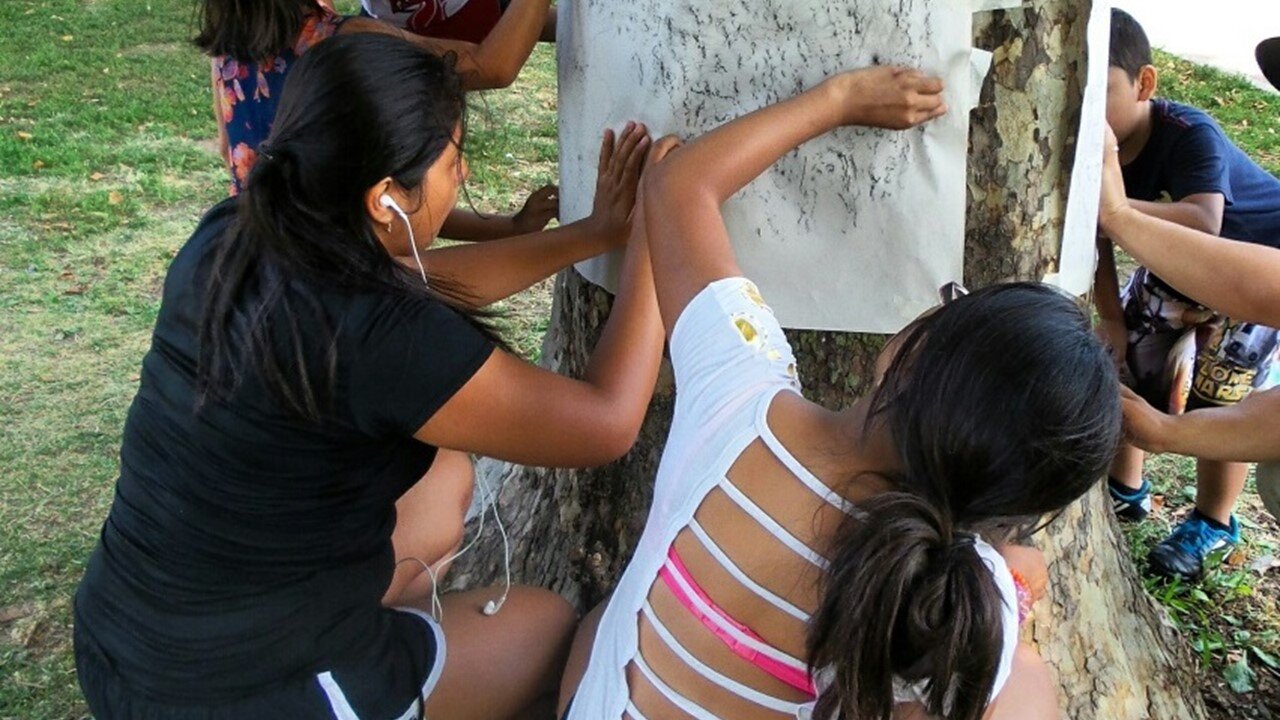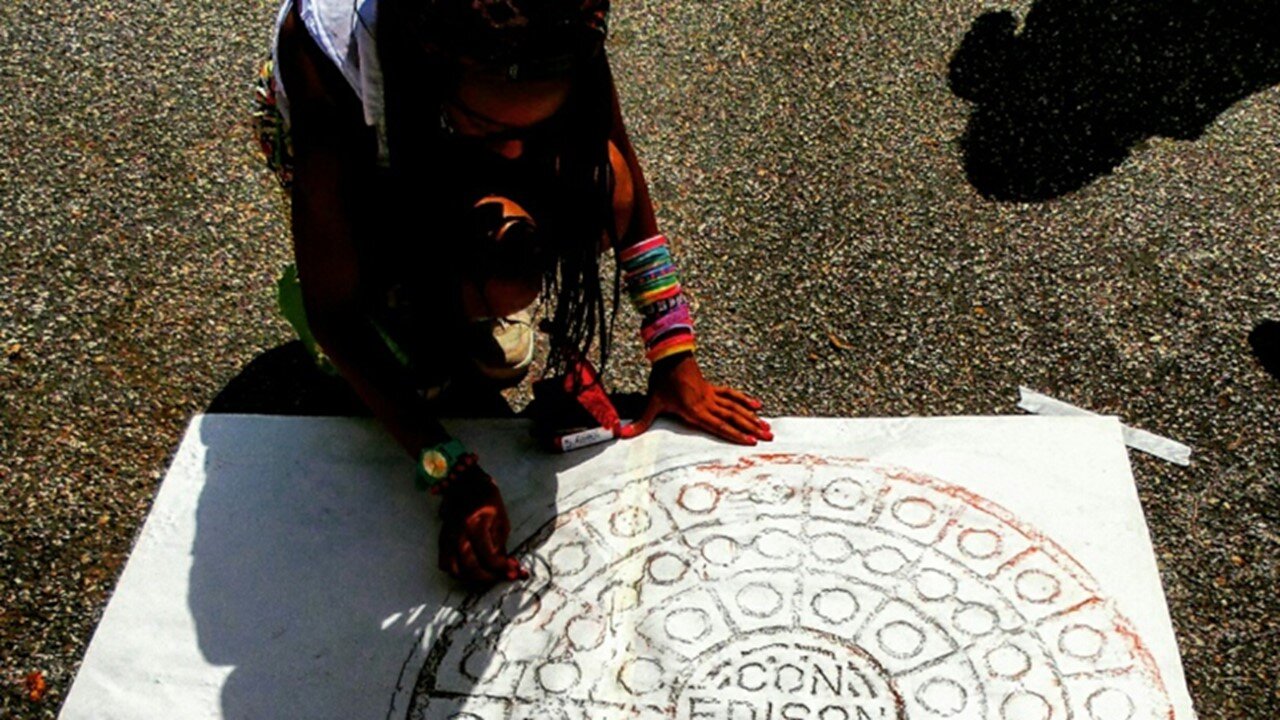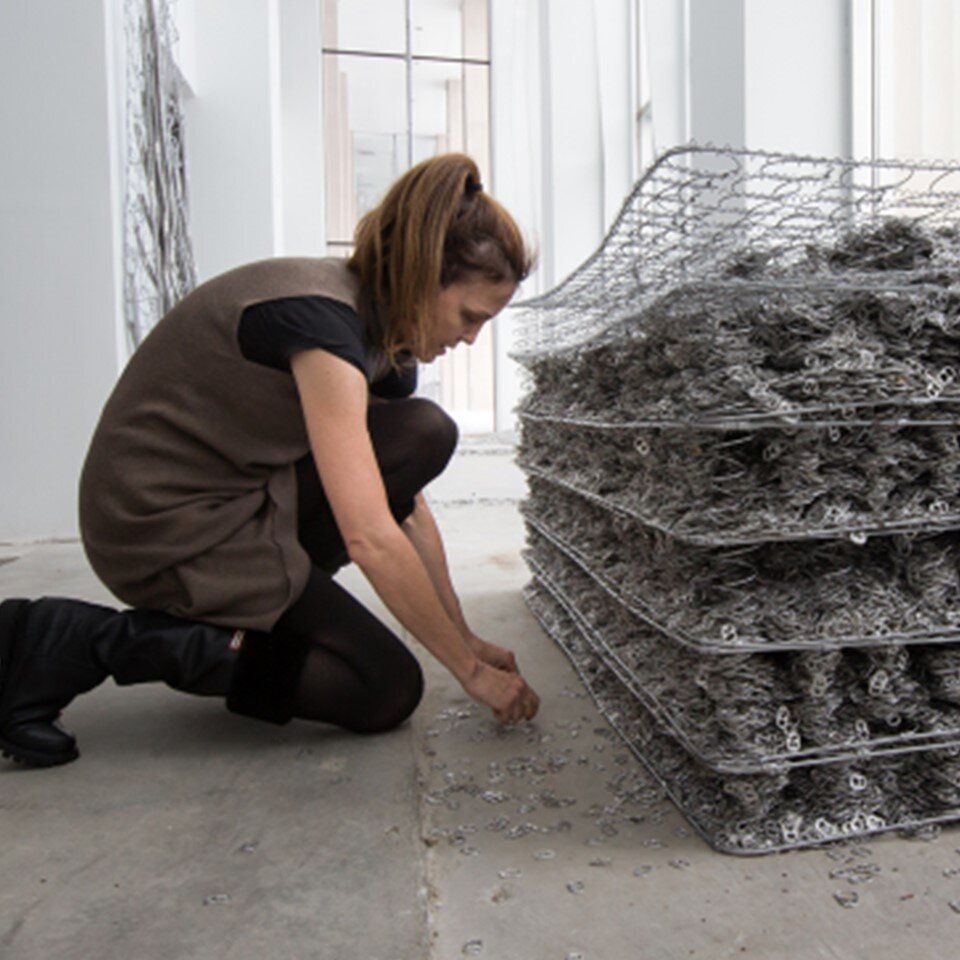AN INCLUSIVE WORLD Artist Talks for Queens Museum Open Studio Artists
January - May 2021
We are happy to announce a partnership with Queens Museum in 2021 with a lineup of virtual art talks by our An Inclusive World artists Michela Martello, Chin Chih Yang, Will Kurtz, and Alice Hope. We have selected artists who are known to incorporate sustainable practices in their unique art work. An Inclusive World artists will provide live virtual talks, moderated by Vida Sabbaghi, for a behind the scenes look at practices in their studios. The Open Studio artists will create their own art works, inspired by An Inclusive World artists’ works. We are excited to foster a reciprocal safe, creative, virtual platform on which both groups of artists can collaborate.
For more information click here.
Artists Bios:
Michela Martello
Michela Martello’s humanistic, accessible, works are characterized by symbolism. A perpetually curious interdisciplinary artist, she brings together the traditional and contemporary influences of a variety of techniques, media, themes, and cultures to create art that achieves a universal language of aesthetics that merges centuries and crosses cultural bounds. Born in Grosseto, Italy, she studied illustration at the IED, Europe Institute of Design after which she published works in over 30 books. In 1993 she shifted her focus to painting and she moved to New York where she started her research as artist painter full time. She exhibited at A.I.R. gallery and Pen + Brush Gallery, for the traveling exhibition. “Overlap; Life Tapestries'' curated by Vida Sabbaghi, a group show that traveled to Hub Robeson Gallery in 2018, the same year Pen+Brush Gallery hosted a large scale solo show of 8 years of Martello's paintings.
Chin Chih Yang
Chin Chih Yang is a performance artist who was featured at the inaugural opening of Queens Museum, after major renovations in 2013. A photo of this performance at Queens Museum was used for the cover of the book, Bridging Communities through Socially Engaged Art. Chin is a contributing artist for COPE NYC’s traveling exhibitions and educational programming, inspiring many with the interesting ways he uses sustainable practices in his artwork and performances. Finding the modern world both disturbing and entrancing, he aims in his work to capture the complex state of anxiety and compulsive-fascination specific to the contemplation of contemporary social problems. Chin Chih Yang's work has been highlighted in The New York Times, the Taipei Times, CBS, NY Art Beat, the Village Voice, Time Out New York, Flavorpill and Art Asia Pacific magazine. NY1: its celebration of Asian- American artists with a profile of Chin Chih and the vivid works he makes out of mixed media.
Will Kurtz
Will Kurtz was born in Michigan and received his Bachelor of Landscape Architecture from Michigan State University. He practiced landscape architecture for 25 years in the United States and Canada. Eventually his passion for art superseded landscape architecture, and he moved to New York to study art and create paper people. His distinctive life-size sculptures are made of hundreds of sheets of newspaper taped over wood and wire. His colorful pieces portray average New Yorkers going about everyday tasks like cleaning the sidewalk or walking the dog. Will is represented by Kim Foster Gallery, New York, Avant Gallery, Miami, Galerie Sebastien Adrien in Paris. His work is represented in many prominent collections around the world.
Alice Hope
Alice Hope was named the 2018 “Woman to Watch” for New York by the National Museum of Women in the Arts. Alice Hope holds an M.F.A. from Yale University, and shows at Ricco/Maresca Gallery in Manhattan. She has created numerous public and residential commissions, among them a large-scale magnetic installation, Under the Radar, at Camp Hero State Park in Montauk, NY. She often incorporates binary code and repetition in her compositions. In her Armory Show project, she created two commissioned public works; one panel repeated the binary code for “love,” and the other repeated the code for “blind.” She built a site-specific installation outside the Queens Museum with more than a million used can tabs. This work was part of a wider project that reckoned the fluctuating value and meaning of can tabs in continually changing contexts.







